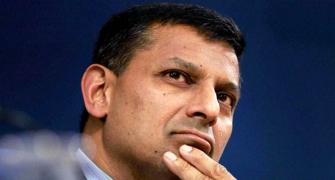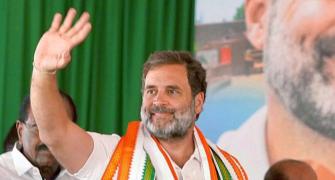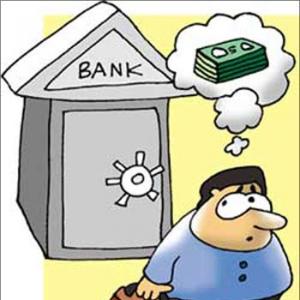Sustained GDP growth of eight to nine per cent will be possible only if India’s investment rate, which has dropped below 30 per cent, climbs back above 35 per cent, says Ajay Chhibber.

The revival of long-term growth is highly dependent on the revival of private investment - the two go hand in hand.
The sharp rise in GDP growth from 2003-04 to 2007-08 - India’s golden growth period - was based on rising corporate investment.
After the global crisis when corporate investment fell sharply, growth continued but was fuelled by non-corporate private investment, especially in services and real estate and fiscal stimuli. But it could not be sustained.
What is needed to revive private investment? The new Bankruptcy Law is a welcome piece of legislation - but its implementation will take time.
Improving the doing business agenda will help in the longer term. But other more immediate policy levers must also be used to revive private investment.
New research - using the old GDP series data from 1980-81 to 2013-14 (new series not yet available or credible) shows three factors - the real exchange rate, credit to the private sector and public infrastructure investment explain almost 90 per cent of the variation in private investment, but they have different effects on corporate and non-corporate investment.
Public infrastructure investment crowds in private investment.
For every percentage increase in the stock of public infrastructure, private investment rises by about 1.1 per cent.
It has a bigger effect on non-corporate investment, which rises by over 1.5 per cent for every percentage increase in the stock of public infrastructure.
Corporate investment is also positively impacted by public infrastructure, but not as much.
This is because corporate investments are larger and can compensate for lack of public infrastructure by building their own infrastructure.
The real exchange rate also has a huge effect on total private investment.
A percentage appreciation in the real exchange rate depresses total private investment by slightly over one percent.
This means a 15 per cent appreciation in the real exchange rate would depress private investment by more than 15 per cent.
A more appreciated exchange rate makes exports less competitive and encourages imports. Both factors hurt private investment. But the impact is much larger on corporate rather than non-corporate investment.
A percentage appreciation of the real exchange rate would depress corporate investment by as much as 2.6 per cent and could explain much of the reason for the sharp drop in corporate investment.
This is because products produced in the corporate sector - largely tradeable - are directly impacted by the exchange rate, as compared to the non-corporate sector investment, which is largely in real estate, and in small enterprises and non-tradeable services, not as much impacted directly by the exchange rate.
The third critical factor explaining private investment is credit to the private sector as a share of GDP.
A percentage change in the private credit-to-GDP ratio impacts private investment by as much as 1.3 per cent.
Once again it is corporate investment which is impacted much more - by as much as 2.3 per cent for a percentage change in the private credit ratio - than is non-corporate investment.
This is because the non- corporate sector has much less access to banking sector credit and must self-finance a much larger share of its investment.
The slowdown in lending from the banking system -starting in 2010-11 due to high fiscal deficits (whose financing crowded out private financing) and accumulating non-performing assets (NPAs) has had a negative impact on private investment, especially on corporate investment.
Corporate investment fell from a high of almost 16 per cent of GDP in 2007-08 to nine per cent of GDP by 2013-14, and remains sluggish.
During this period the real exchange rate appreciated by almost 15 per cent as capital flowed into India - especially after the global recession - when the US began its QE programmes, inflation surged and the rupee was allowed to appreciate.
The RBI did not increase foreign exchange reserves during this period at all - they stayed around $ 250 billion - and deliberately allowed the real exchange rate to appreciate by as much as 15 per cent.
By our calculations a 15 per cent appreciation in the real exchange rate reduced corporate investment by as much as 35 per cent.
Since 2010-11 credit to the private sector also levelled off and also hurt corporate investment, as investors started to look for cheaper capital abroad.
These factors did not impact non-corporate private investment as much, which remained strong until 2012-13 but has since slumped.
Some of the recent slump is explained by slower growth but also by the accumulated decline in public infrastructure investment.
Public infrastructure investment - a critical variable to help crowd in private non-corporate investment - started declining from a recent high of around 3.3 per cent of GDP in 2008-09 and has remained low, contributing to the growing infrastructure deficit.
During much of the 1980s and 1990s India invested five to six per cent of GDP in infrastructure (as opposed to almost 15 per cent of GDP in China), and the bulk of this was provided by the public sector.
Since then total infrastructure investment has increased to almost nine per cent of GDP but two-thirds of this is now provided by private not public investment.
Public infrastructure investment has declined to under three per cent of GDP.
However, much of the private infrastructure investment is financed by state banks and slow execution of projects has led to a huge accumulated NPA problem created by many of these public bank-financed private infrastructure projects (PBFPIP).
These PBFPIP, many of which are not completed, have hurt more than helped, as they have “crowded-out” not “crowded-in” private investment because they have contributed to an NPA problem which in turn has dried up credit for the private sector.
Such projects if completed should have crowded in private investment - especially non-corporate private investment.
The way forward to revive investment is to ensure that the real exchange rate is not allowed to appreciate (and could be depreciated another 10 per cent), public infrastructure investment is increased to at least five per cent of GDP by selling PSUs more aggressively, and the NPA problem in the banking system is resolved quickly so that credit to the private sector can grow.
The new Bankruptcy Law will help if its implementation can be speeded up.
For the future, forcing public sector banks to lend for long gestation infrastructure projects creates problems for the banking system, which eventually comes back to hurt not help private investment in non- infrastructure sectors.
India’s investment rate (fixed capital formation) has dropped below 30 per cent of GDP.
India needs an investment rate of over 35 per cent of GDP, of which public investment must be around eight per cent and private investment over 27 per cent.
Public infrastructure investment must rise to over five per cent of GDP and corporate investment to around 15 per cent of GDP.
Only then will we see genuine GDP growth of eight to nine per cent and get back to the “golden turnpike of growth”.
The writer is visiting distinguished professor at NIPFP and visiting scholar, Institute of International Economic Policy, George Washington University.









